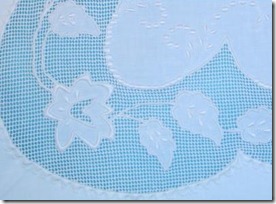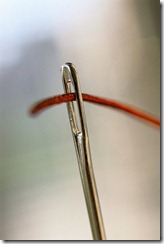 When we were young, back in our home town, people used to carry cotton handkerchiefs. I mean not just in case of emergency (a stubborn cold or an emotional tear), but also women carried them as both an elegant and practical accent to their wardrobe. Sometimes handkerchiefs dressed up a plain top pocket or were simply included in every lady’s purse. Ahhh… those times where objects and accessories were not all disposable! You might consider unhealthy having to use a washable handkerchief to blow your nose or wipe your salty tears and to re-use it later, but certainly chopping a tree is not healthy for the planet either!
When we were young, back in our home town, people used to carry cotton handkerchiefs. I mean not just in case of emergency (a stubborn cold or an emotional tear), but also women carried them as both an elegant and practical accent to their wardrobe. Sometimes handkerchiefs dressed up a plain top pocket or were simply included in every lady’s purse. Ahhh… those times where objects and accessories were not all disposable! You might consider unhealthy having to use a washable handkerchief to blow your nose or wipe your salty tears and to re-use it later, but certainly chopping a tree is not healthy for the planet either!
 I particularly remember the beautifully embroidered filtire handkerchief my mother used to get me. They were generally in pastel colors, embroidered with exquisite precision and beauty on one of is corners. They were so delicate and feminine that it was nice to sport them among your personal items.
I particularly remember the beautifully embroidered filtire handkerchief my mother used to get me. They were generally in pastel colors, embroidered with exquisite precision and beauty on one of is corners. They were so delicate and feminine that it was nice to sport them among your personal items.
During our trip to South America, we met María Suarez, a sweet and soft-spoken embroiderer who has excelled the art of filtire for the past 40 years. Her workshop is located in the province of Córdoba (Argentina) at the foot of a dormant volcano. We visited her with the idea of including some of her outstanding creations in the Nativa Store catalog.
“Our craft is disappearing. There are very few of us left who master this skill” says María “I am happy to share my creations through Nativa Store with discerning customers from around the globe, since whether it is a place mat or baby bib, they will acquiring a one-of-a-kind piece that has been crafted with love and a sacred tradition.”
Filtire embroidery has been around for many centuries. You can find it’s origins in Spain or France and it was brought to South America by the Europeans. The technique is used to embellish delicate accessories such as placemats, baby bonnets, blouses, cotton skirts, dresses or table clothes and napkins. The technique is extremely time-consuming and intricate. It requires a piece of cotton cloth, great lightning, superb vision and creativity. Firstly, the embroiderer determines a graphical pattern to follow. Sometimes designs resemble a flower or a geometrical image. Afterwards, cotton threads are grouped by two (horizontally and vertically) and are carefully stitched with white cotton thread first, and later cut to determine small empty squares in the shape of a checker.
 Nativa Store’s 2011 Spring collection includes beautifully designed filtire pieces. Each of them is the result of many hours of intense labor and great dedication. Including these eco-friendly handmade treasures is our testament to the few remaining artisans to continue creating this pieces with great love and passion.
Nativa Store’s 2011 Spring collection includes beautifully designed filtire pieces. Each of them is the result of many hours of intense labor and great dedication. Including these eco-friendly handmade treasures is our testament to the few remaining artisans to continue creating this pieces with great love and passion.
Hope you love them as much as we do.
See you soon!
